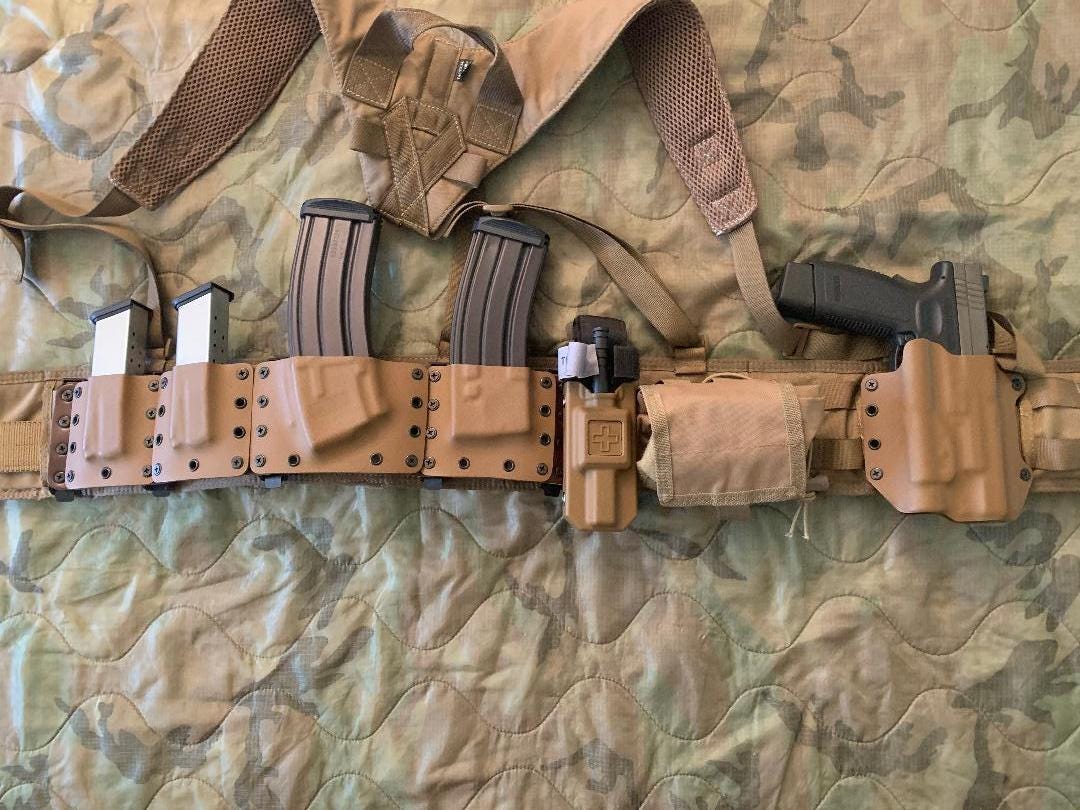My 18,000th draw
Ammo unavailability and high prices, the damn pandemic, and other factors have taken my dry-firing training to new levels.

Since the plague hit and ammunition became difficult to find and afford, I realized that the only way to retain and improve my defensive shooting skills was by increasing my dry-firing training at home.
My goal is 50 draws from holster with my handgun, and 50 ready-up drills with my AR per day, every day. I’d like to say I’ve met this goal, but unfortunately that’s not always the case.
I use a 3-inch dot on the wall of my bedroom as my target for both weapons, and I incorporate mag changes too.
Safety is paramount.
I always triple check to insure my firearms are unloaded, and I religiously follow the The 5 Basic Principles of Gun Safety:
Treat every gun as if it were loaded.
Always point your gun in a safe direction.
Never point your gun at anything you don't intend to shoot.
Keep your finger off the trigger until your ready to shoot.
Be sure of your target and what's beyond.
If I flub a draw, a mag change or a Ready-up drill badly, I add five more reps as a “penalty.”
My war belt is perfect for this training, as it’s quick to doff and don, and it doesn’t matter what I’m wearing, which is usually shorts and a t-shirt — no belt.
I always look at my holster while reholstering, which I’ve always believed should be a slow, almost admin process. After all, reholstering is the most dangerous thing we do, and there is no such thing as a “speed reholstering” drill. Leave that crap for the YouTube commandos.
After a few months of serious dry firing, I began to notice significant changes in my skills.
My draw speed is now around a second, and sometimes — very rarely — sub-second. This has been confirmed on the range with a shot timer.
And I’m able to get my AR’s red dot onto the target much faster too.
This is precious for a defensive shooter — the ability to know where your red dot is going to be when you bring up the rifle — without fumbling or hunting for the dot. Muscle memory kicks in and puts the dot where you want it.
New shooters, and there’s around 8 million, should understand that you can still train effectively without mortgaging the house for ammo costs.
The best shooters I know, and I know a few really good shooters, all practice dry.
It is the number-one way to improve your shooting skills.
As always, thanks for your time.
Lee




What do you recommend for dry firing? Any special equipment? Bore laser, etc.
As a former IPSC competitor, I was already dumping a thousand rounds a week into the berm or plate, and dry fire practice was a standard part of daily training. I had a 3x5 card set at 7 yards on the wall and would draw to that every time.
To practice my index shooting, I'd see my little magic marker dot, close both eyes, draw as fast as possible, then open them to see if my sights were on. As time went by indexing was second nature. I could draw and be dead on my target in hundredths of a second.
Then, I would rotate my body 15 degrees or so and repeat until I could draw to a target with my eyes closed and be on it every time no matter my body position. In time, I would alter the distances to target and start all over again.
You are almost never going to have time to draw, get a perfect sight picture, and shoot your assailant. This is where index shooting comes into play. You're shooting with muscle memory only. If you have time to line up a sight picture, you would almost always have time to break contact. Being able to do this quickly and efficiently may be the difference in who gets shot first, you or your attacker.
Once you have that training routine down, being able to do mag changes or clearing stoppages or misfires is next.
I had a box of dummy rounds I created on my Dillon with no powder and spent primers. This gave the weight of a full mag. I would practice dropping my magazine onto a carpet and without looking grab my spare insert and rock on. Repeat until your hands hurt. Take a break and repeat.
At my prime, I was confident enough to take on long guns inside of 35 yards .
A string of injuries , including catching a ricochet off a plate with the end of my humerus (which shattered) ended my IPSC time prematurely. I never stopped training though. I want every single edge I can get if comes down to being necessary to send hate capsules downrange again.